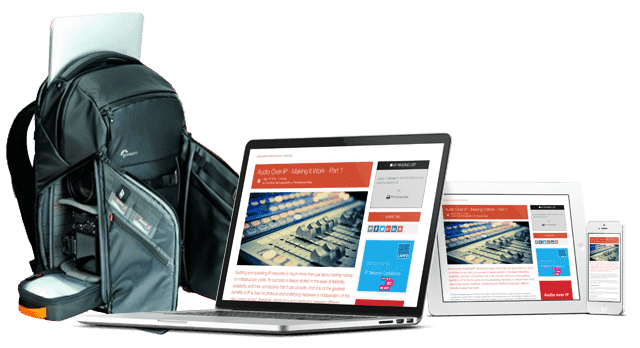RPS Makes Move To IP With Calrec’s Argo
_789_444_70_s.jpg)
Ross Production Services (RPS), a division of Ross Video, has upgraded its Connecticut facility by integrating three new 60-fader Argo S consoles. The Argos are housed within the facility’s three REMI control rooms that produce events for clients like CBS, ESPN, Athlete’s Unlimited and EA Sports. Working with the company’s existing Calrec technology, the Argos are part of RPS’ first foray into IP at the Connecticut location, representing a milestone for the company.
Nick Minore, Business Manager at RPS, said, “Our studios were built out of necessity during the COVID pandemic, and with the increasing number of events each year and looking to the future, it was a natural step to introduce IP technologies as we expand our capabilities. By combining Argo and the ImPulse core, we’re increasing our focus on REMI productions and will also pair Argo with Calrec’s RP1 remote production units for future events.”
Since acquiring the Argos, RPS has moved its existing Apollo console into its new 40-foot Box Truck, which retains a Hydra2 network in the field. Calrec Brios have now been integrated into all of RPS’ Sprinter van mobile units and with these changes, RPS has transitioned to an entirely Calrec-equipped audio fleet, coinciding with the launch of its new Sprinter vans FIN1, FIN3, and FIN4 this year. RPS’ Calrec roster now includes eight Brios with MADI, Dante, and Hydra2 hubs, one Apollo, five RP1 systems, and three Argo consoles.
Minore explained, “One of the biggest challenges with REMI production is managing audio. Using RP1s allows our A1 in Connecticut to customize what audio is being transported back to our facility in Connecticut. They don’t need to go back and forth with another audio person on-site for routing or local mixing. We can remotely pair the faders on the RP1 console to our Argo surfaces in Connecticut, making it easy to provide a real-time IFB mix onsite.”
Recent Argo projects include Athlete’s Unlimited Softball, Athlete’s Unlimited Volleyball, and Premier Lacrosse Juniors on ESPN Networks. Minore is very impressed with the Argos’ performance. He said, “Their touchscreen interfaces and modern UI are similar to the Brio and quick to learn. The flexible fader layouts and the option to rearrange panels are also huge plusses, along with modular I/O ports on the back of the surface and the ability to pair faders with our existing RP1 system.”
You might also like...
Phil Rhodes Image Capture NAB 2025 Show Floor Report
Our resident image capture expert Phil Rhodes offers up his own personal impressions of the technology he encountered walking the halls at the 2025 NAB Show.
Microphones: Part 9 - The Science Of Stereo Capture & Reproduction
Here we look at the science of using a matched pair of microphones positioned as a coincident pair to capture stereo sound images.
Monitoring & Compliance In Broadcast: Monitoring Cloud Networks
Networks, by their very definition are dispersed. But some are more dispersed than others, especially when we look at the challenges multi-site and remote teams face.
Audio At NAB 2025
Key audio themes at NAB 2025 remain persistently familiar – remote workflows, distributed teams, and ultra-efficiency… and of course AI. These themes have been around for a long time now but the audio community always seems to find very new ways of del…
Production Control Room Tools At NAB 2025
We return to the high pressure world of the Production Control Room where Switchers, Replay and Graphics are always at the heart of the action. The 2025 NAB Show will bring a myriad of new feature releases and opportunities for hands-on…








